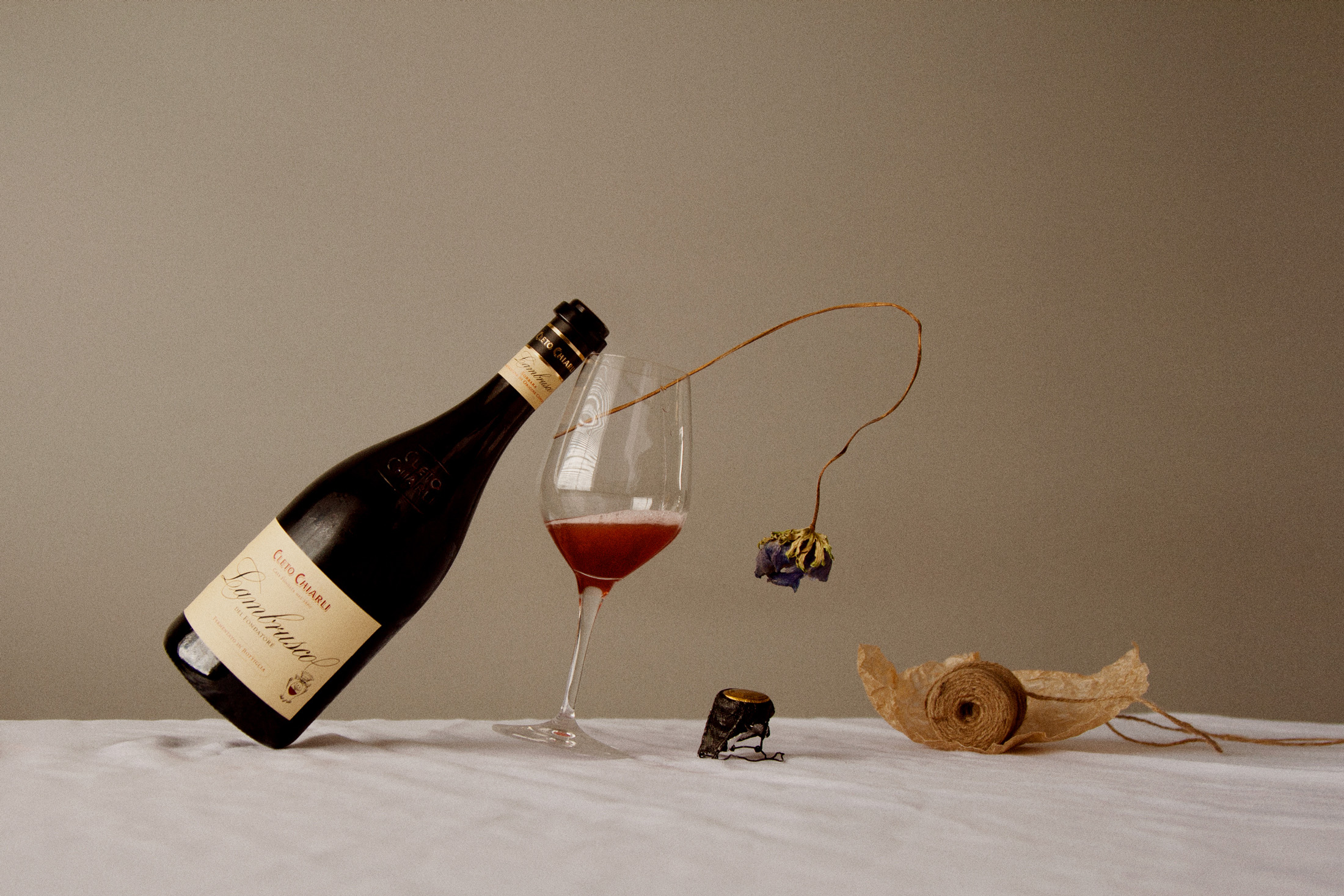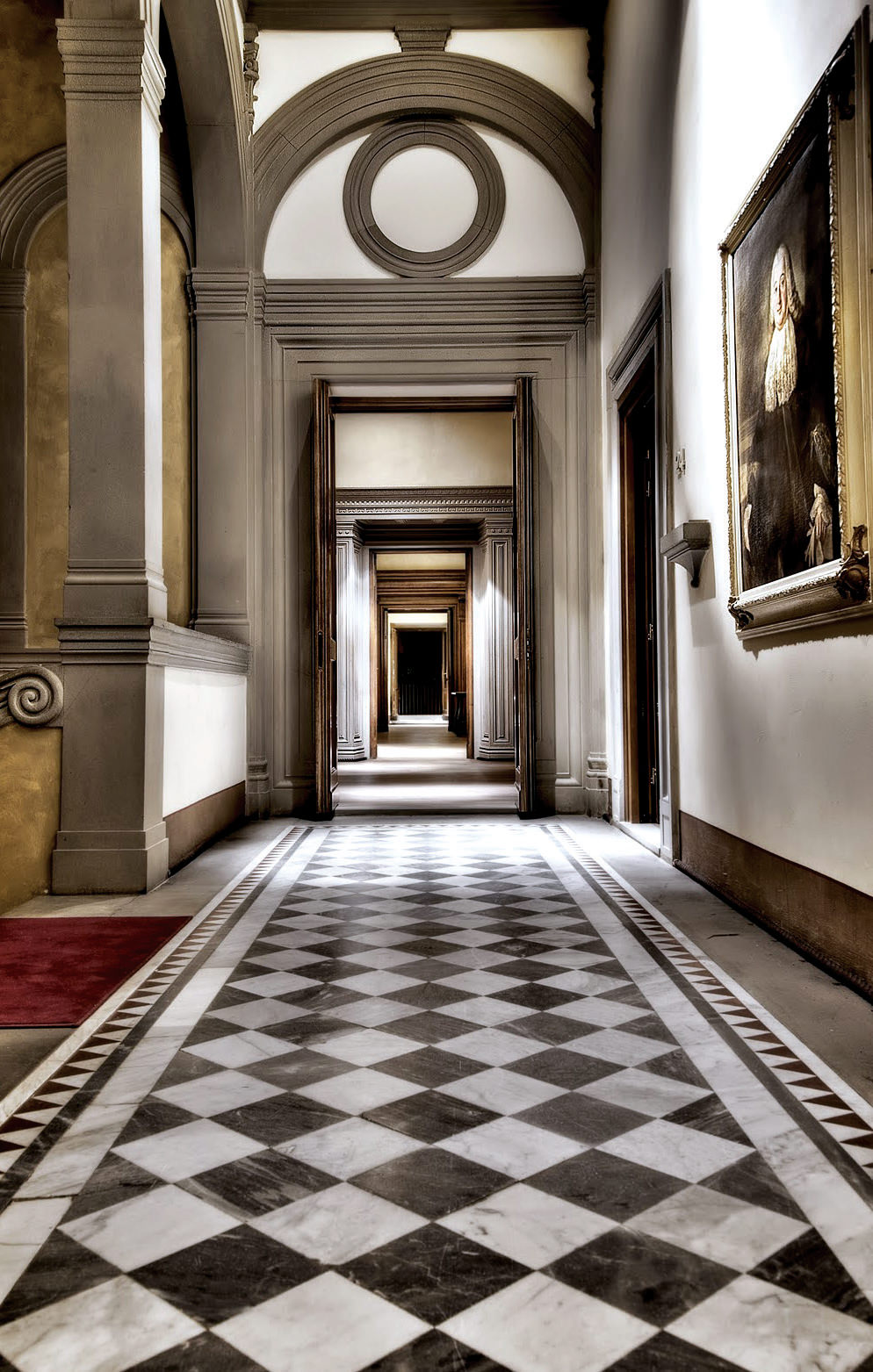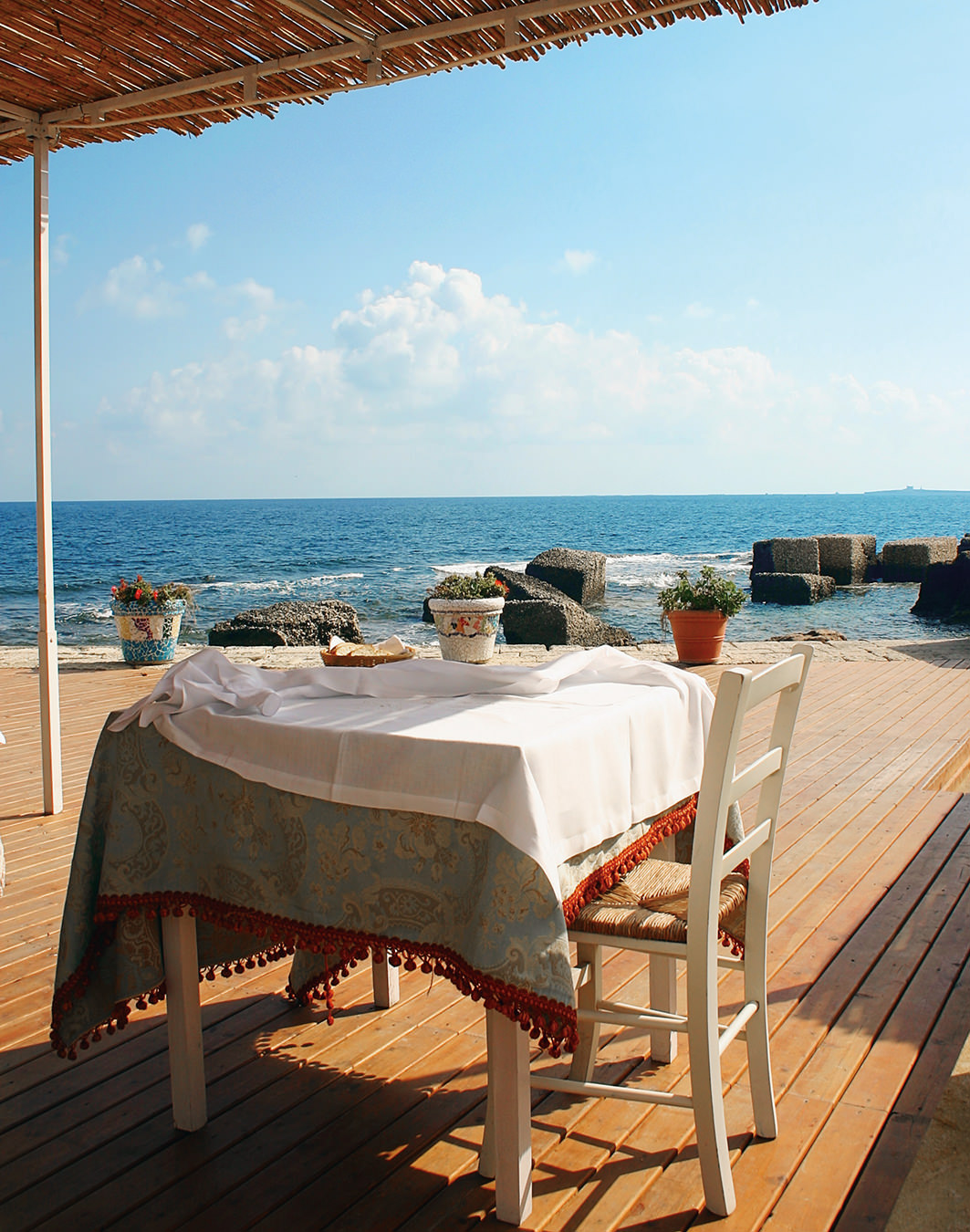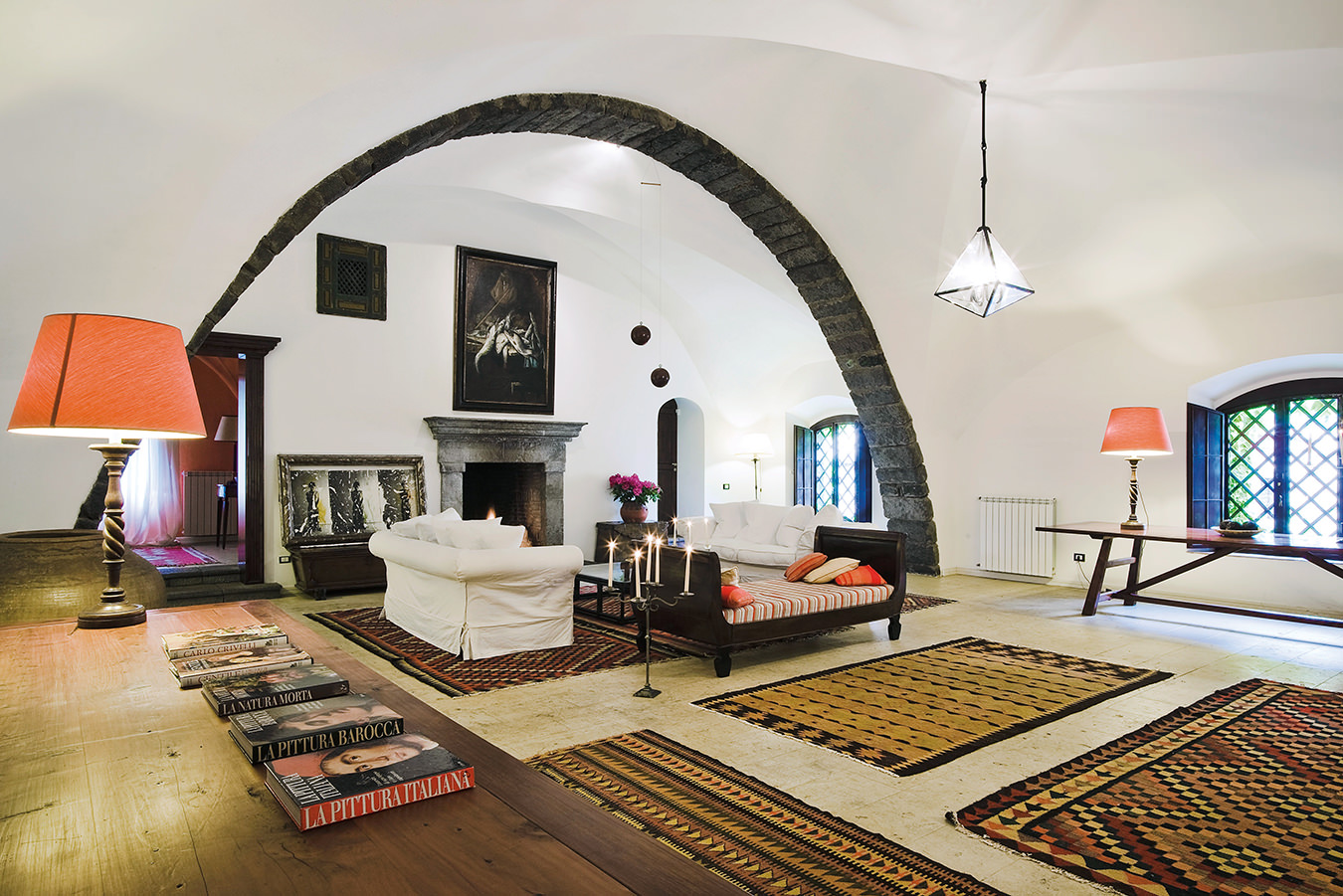Lambrusco: Italy’s Effervescent Red Wine
Taste the new generation.

Lambrusco, the sparkling wine from northeastern Italy, is in the midst of a major makeover, and it’s high time to taste it again. When lambrusco was widely known as (and almost always was) no more than pink, simple, sweet, and fizzy, it was a hit among fans of easy-drinking, undemanding wines. Vast volumes of lambrusco were exported to the United States, where it was the sparkling equivalent of white zinfandel, and because of its style and popularity, it was regarded as a wine that no serious wine drinkers would think of consuming. It was so maligned that some people called it “Italian Coca-Cola.”
But in the last few years a number of producers, large and small, have quietly been making serious, high-quality lambrusco. They’ve reduced vineyard yields dramatically and turned to new production methods, and the results are impressive. The new generation of lambruscos are mainly dry; show complex aromas and flavours, good structure, and pleasant tannins; and are age worthy in some cases. Many make excellent drinking on their own, while others are fine complements to food—especially dishes from the Emilia-Romagna region, where lambrusco originated and continues to be made.
Modena, the main town of the lambrusco region, is home to Osteria Francescana, Massimo Bottura’s gem of Italian gastronomy and balsamic vinegar: aceto balsamico di Modena. Like lambrusco (which is ideal for pairing with aged balsamic-drizzled chunks of Parmigiano Reggiano, Emilia-Romagna’s famed export), the regional balsamic vinegar is made in one style for the mass market (the above-mentioned aceto balsamico di Modena) as well as a high-quality style (aceto balsamico tradizionale di Modena) that is aged for years or even decades. With its appeal to both mass and discriminating markets, aceto balsamico di Modena is a model for lambrusco, and perhaps it’s no surprise that a number of lambrusco producers also have cellars that contain barrels of aging vinegar.
Lambrusco, once regarded as a wine that no serious wine drinkers would think of consuming, was so maligned that some people called it “Italian Coca-Cola.”
But a key shift underlying the production of high-quality lambrusco is not aging so much as the adoption of new production methods. Lambrusco is lightly sparkling and used to be made almost solely by the Charmat method, in which the grape juice is fermented in a sealed tank, trapping the carbon dioxide (a by-product of fermentation) in the wine. The wine is then bottled under pressure and when a bottle is opened, the gas is released as the bubbles that make sparkling wine distinctive.
Most lambrusco is still made this way, but even this method, generally thought of as producing good but unremarkable sparkling wines, is now producing good-quality examples. But two other methods, both associated with higher-quality sparkling wine, are also being employed: the ancestral and the traditional method—the latter, the method used to make champagne, is also known as the classic method. What makes them different from the Charmat method is that the wine goes through partial fermentation in the bottle, giving it more finesse.
Lambrusco is made in either frizzante or spumante styles, the difference being the pressure in the bottle, which is measured in “bars”. Frizzante wines have lower pressure (1 to 2.5 bars), while spumante wines have more than 3 bars. Champagne typically has 5 to 6 bars.
Lambrusco is made mainly from the six members of the lambrusco family of grape varieties, especially Lambrusco Salamino, the most widely planted and so named because its bunches take the shape of a salami. Other important varieties are Lambrusco di Sorbara and Lambrusco Grasparossa di Castelvetro. Lambrusco regulations allow for up to 15 per cent of some other local varieties, including the dark-skinned ancellotta grape, sometimes added to give colour to wine. Careful selection of varieties helps produce high-quality lambrusco.
Many producers use more than one of the methods: Charmat for large-production lambrusco and one or both of the others for smaller-production brands, but Cantina della Volta makes lambrusco using only the traditional method. Christian Bellei, whose great-grandfather started the winery in the 1920s, says many producers thought making lambrusco this way was too risky, and although he had good results, it was difficult to sell at the higher prices demanded by the more expensive method, because lambrusco was traditionally an inexpensive wine.
Lambrusco is made mainly from the six members of the lambrusco family of grape varieties, especially Lambrusco Salamino, the most widely planted and so named because its bunches take the shape of a salami.
Bellei takes the traditional method seriously, going to Champagne five times a year to work with a research institute in Épernay. But he’s not trying to emulate champagne, as the lambrusco varieties have distinctive qualities. He thinks Lambrusco di Sorbara is the best of the lambrusco varieties to use with the traditional method. “The others? I don’t know. Maybe in the next life.” Among Bellei’s notable wines is Trentasei, a fine spumante Lambrusco di Modena made from 50-year-old vines, with the wine aged on lees for more than 36 months before being disgorged. It is garnet coloured, shows lovely berry flavours balanced with clean acidity, and is dry and slightly tannic. The bubbles are small and plentiful.
Also dating from the 1920s is Paltrinieri, where Alberto Paltrinieri is the third-generation owner and winemaker. He realizes that, like other producers of quality lambrusco, he has to battle negative perceptions. “If you say lambrusco, you say nothing—wine, more or less; sparkling, more or less; sweet, more or less. You have to explain the place. We are a little winery and our only chance is to work with the land where we live.” Paltrinieri uses 100 per cent Lambrusco di Sorbara to make five of his eight wines. One is LaRiserva, a spumante brut made by the Charmat method that remains in the tank for a whole year, rather than being bottled as soon as fermentation is finished. The first “reserve” lambrusco, it is complex and layered, deeply flavoured, and delicious.
Until quite recently, two lambrusco varieties were planted randomly in vineyards, where they were harvested at the same time and then vinified together. It was only in 1987 that Vigna del Cristo separated its Lambrusco di Sorbara from its Lambrusco Salamino. The first of these becomes an excellent wine in Rosé del Cristo, made in the traditional method and aged on lees for 30 months. It is a rich gold and shows lovely yeasty notes together with complex fruit flavours. Rosé del Cristo is a lambrusco that ages well and gains elegance. After eight years it takes on a deeper colour, changing from gold to amber, and the flavours tend toward dried fruit and notes of tobacco.
The new generation of winemakers has raised the bar (in more ways than one) and is making sparkling wines worthy of any table.
One lambrusco producer, Cantina Formigine Pedemontana, is a co-operative founded in 1920 that now has 380 grape grower members. Over 80 per cent of its wine is sold in bulk, but it makes some very good smaller-production lambruscos. Passione, a Lambrusco Grasparossa di Castelvetro made from organically grown grapes, is simply good drinking. It is solid red and slightly off-dry, with bright fruit flavours, good body, and lovely, clean acidity. It shows what can be done without departing too much from the conventional style.
Organic farming is the rule at Cavaliera, where Lorenzo Simoni uses only the tra-ditional method. His frizzante wines spend six to 12 months on lees, while his spumante wines get 24 months. One of Simoni’s most distinctive wines is Cavaliera Lambrusco Grasparossa di Castelvetro, a robust and (in the best sense) somewhat rustic, purple-hued frizzante. It’s dry to astringent and quite tannic, with layered flavours of dark fruit as well as some smoky and gamy notes.
While many lambrusco producers date from the 20th century, Cleto Chiarli was founded in 1860. Production is big—1.2 million bottles a year, with 30 per cent of it exported—but there’s room for higher quality wines. They include Vecchia Modena Premium, an elegant wine made from Lambrusco di Sorbara. With 24 hours’ skin contact, it’s mid-bright pink and just off-dry, with lovely red berry flavours and bright, clean acidity.
There are more than three dozen lambrusco producers in Modena (which makes up over 95 per cent of the entire lambrusco production), many offering distinctive takes on wine. The vast majority of lambrusco is made in what we might think of as the traditional style; there’s still a big market for it. But the new generation of winemakers has raised the bar (in more ways than one) and is making sparkling wines worthy of any table. Like Cru Beaujolais producers battling the image of Beaujolais Nouveau, they know they have to overcome the prejudice that years of pink, sweet, fizzy wines have engendered. But once you taste one of these new lambruscos, you’ll find it hard to imagine they won’t soon break through and get the recognition they deserve.
_________
Never miss a story. Sign up for NUVO’s weekly newsletter, here.




